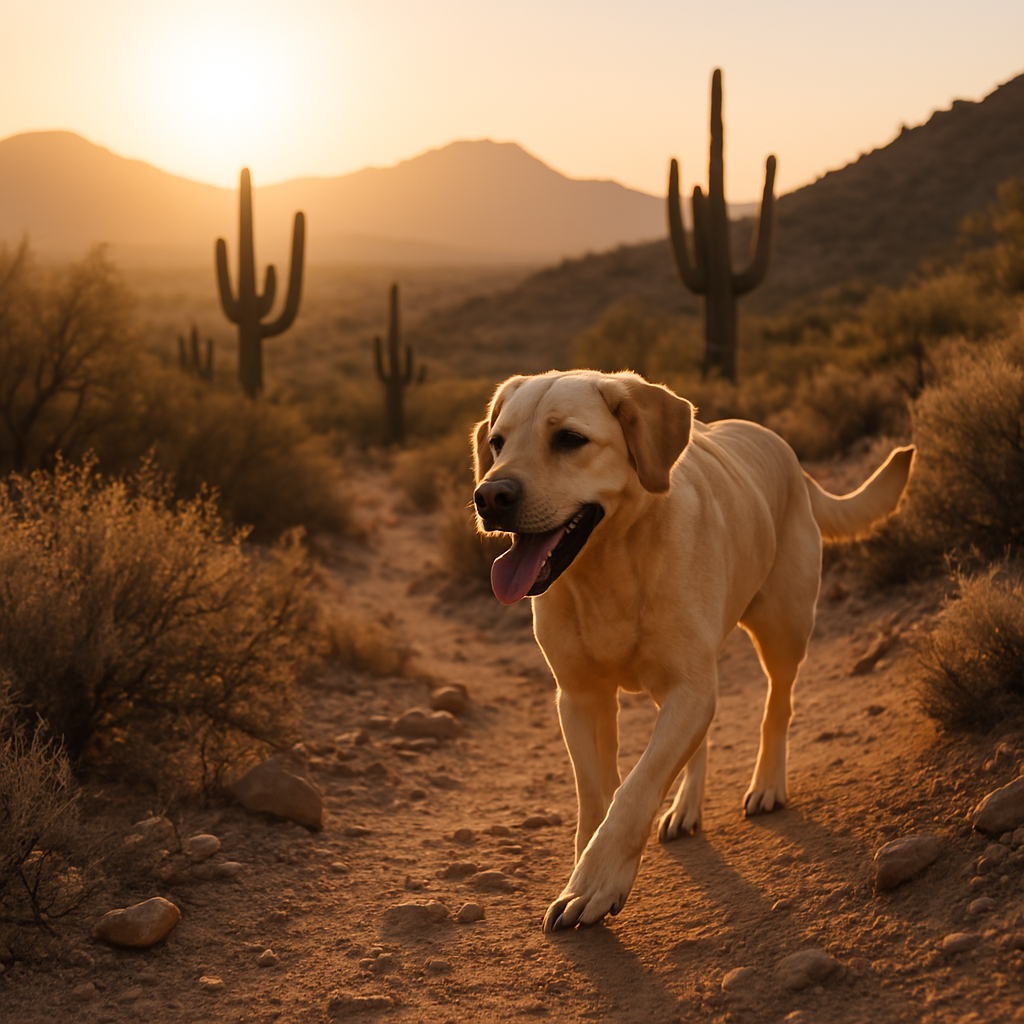Understanding Valley Fever
If you live in or have traveled through the Southwestern U.S. with your dog, Valley Fever needs to be on your radar. It’s caused by a fungus—not a virus, not a bacteria, but a fungus that lives in the dirt. And when your dog sniffs, digs, or inhales the dust? That’s how this thing gets into their system.
Here’s what every dog parent should know…
What Is Valley Fever?
Valley Fever (also called coccidioidomycosis) is a fungal infection that starts in the lungs and can spread throughout the body.
Hot Zones & Exposure Risks
These are the high-risk areas in the U.S. where Valley Fever is most common:
🔥 Arizona
Phoenix, Tucson, and surrounding desert towns
60–70% of all U.S. cases come from here
Year-round exposure, but especially bad during dry, dusty seasons
🔥 California
Central Valley, Bakersfield, Fresno, and San Joaquin Valley
Commonly misdiagnosed due to overlapping symptoms with pneumonia or allergies
Risk spikes with construction or seismic activity
🔥 New Mexico, West Texas, Southern Nevada, Southern Utah
Still considered endemic—fewer cases but growing due to population shifts and climate changes
⚠️ Emerging Zones
Parts of Washington, Colorado, and Northern Mexico
Dogs at Higher Risk:
Outdoor adventurers (diggers, sniffers, hikers)
Immune-compromised or senior dogs
Dogs with respiratory issues or autoimmune disorders
Brachycephalic (flat-faced) breeds
If your dog spends any time outside in these areas, they’ve probably been exposed.
Do Seasons Matter? You Bet They Do
Valley Fever has seasonal surges—not because the fungus disappears, but because weather conditions make the spores airborne.
🌵 Late Summer to Early Fall (July–October)
Peak risk due to monsoon rains followed by dry spells
Cracked, drying soil releases spores into the air
🌬️ Late Fall to Early Winter (October–December)
Cooler weather + dry winds = perfect storm for spore inhalation
Dogs are often more active outdoors, increasing exposure
🌧️ Late Winter to Early Spring (February–April)
Slightly lower risk window due to higher moisture levels
Less dust = less spore movement—but it’s not zero risk
Year-Round Warning:
Arizona and parts of California have no “safe” season. Dust storms, digging, or construction activity can stir up spores any time.
Protective Tips:
Wet down dry yards or play areas before letting dogs out
Avoid dusty trails, digging, or newly disturbed soil
Rinse your dog’s paws and snout after outings
Start immune support before high-risk seasons hit — fresh foods, whole food vitamins and minerals, functional mushrooms, essential oils - especially anti-fungal oils, herbs, etc. Consider a rotational protocol of anti-fungal properties.
How It Spreads in Dogs
Dogs inhale the spores from the dirt or dust. That’s it. No eating, no licking—just breathing in spores from the environment.
Dogs that dig, hike, or run outdoors are most at risk, but even a walk through a dusty park can do it.
Symptoms to Watch For
Valley Fever doesn’t always show up right away. Sometimes symptoms hit fast, and sometimes the infection simmers quietly before spreading.
Common signs:
Ongoing cough
Lethargy or fatigue
Fever that doesn’t respond to antibiotics
Poor appetite or weight loss
Limping or swelling in the legs
Skin lesions
Neurological issues (in more advanced cases)
If your dog just seems “off” and you’ve been in the Southwest… don’t ignore it. Have them tested.
Diagnosis & Vet Care
Your vet may recommend:
Blood tests (to look for Valley Fever antibodies)
X-rays (to check lungs or swollen joints)
Biopsies (for skin lesions or draining wounds)
The earlier it’s caught, the better the outcome.
Conventional Treatment Options
Most dogs are put on antifungal medications like fluconazole. It works, but it’s a long-term commitment—often 6 to 12 months, sometimes longer.
And yes, those meds can be hard on the liver, so bloodwork monitoring is essential.
Natural Support Matters
If your dog is fighting Valley Fever, supporting the immune system, gut health, and detox pathways is key. Here’s where holistic wellness can really shine:
A fresh, anti-inflammatory diet to reduce stress on the body
Mushrooms like reishi, turkey tail, and chaga to support the immune system
Gentle liver-supporting herbs like milk thistle or dandelion
High-quality probiotics to rebalance and support the gut
Anti-fungal Essential oils.
Essential oils (when used properly) that support the lungs, immunity, and inflammation
I would absolutely consider Raindrop Technique with an added anti-fungal oil to the protocol on a regular bases (proactively) and if there has been an official diagnosis.
These natural tools may not replace the need for more traditional medications in severe cases—but they absolutely help the body recover faster and more fully.
What You Can Do Right Now
If you suspect Valley Fever, get your dog tested—don’t wait.
Ask your vet to monitor liver enzymes during treatment.
Start feeding real food to strengthen the body.
Avoid over-vaccinating or giving unnecessary meds during recovery.
Give your dog time to rest and heal—no forced hikes or ball-chasing marathons.
Need Help with Natural Support?
I’ve created a detailed Valley Fever Recovery Guide inside my private forum. It includes:
Supplement options and dosing
Immune-supporting recipes
Food therapy tips
Liver protection strategies
Symptom tracking tools
You don’t have to figure it all out alone.
Statements in this blog have not been evaluated by the FDA. Educational content only. Not intended to diagnose, treat, cure, or prevent any disease.
Want even more resources, Q&A, and discussions on nutrition? Join my community forum. Free and Subscription Content.
Affiliate Links for Quality Products

